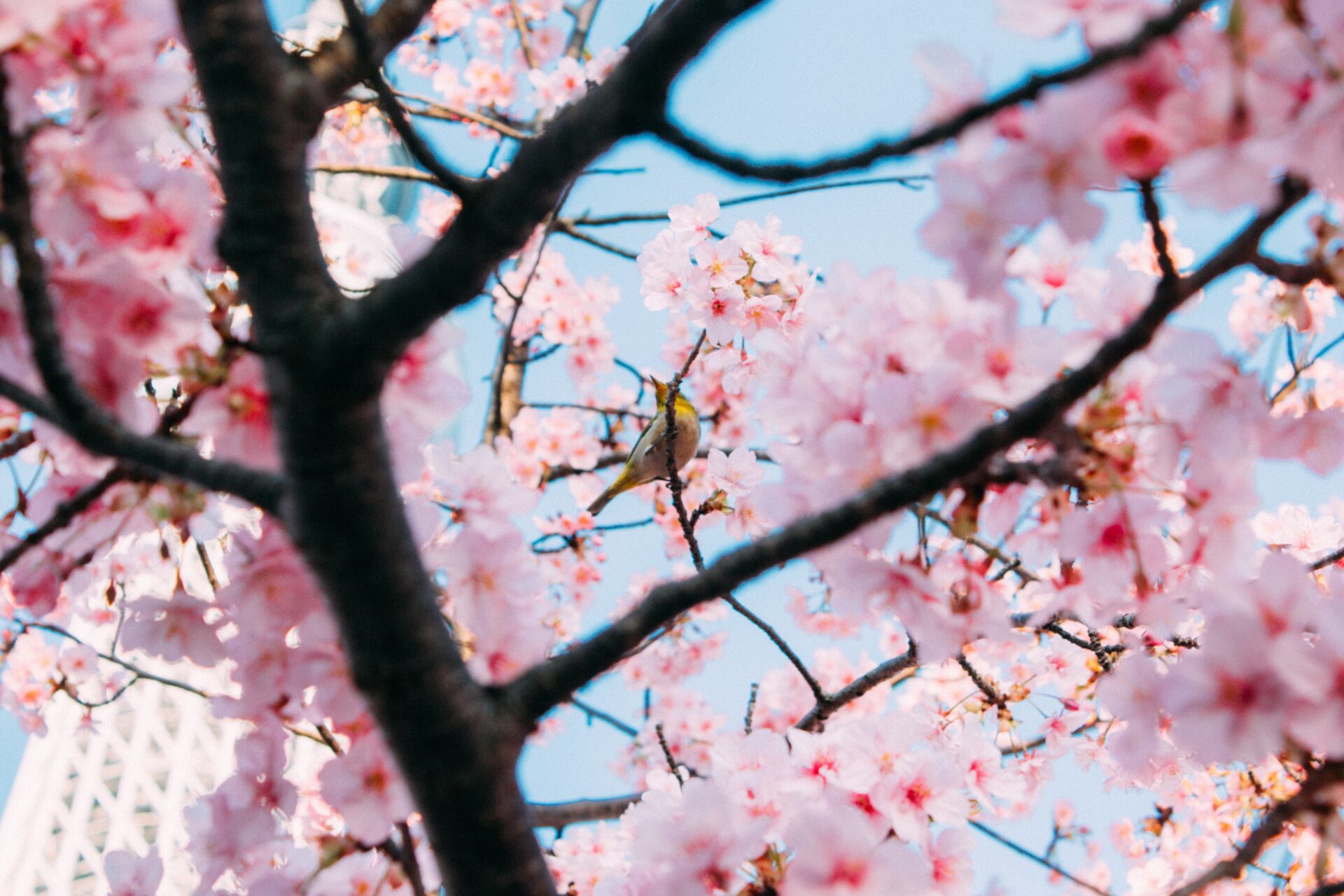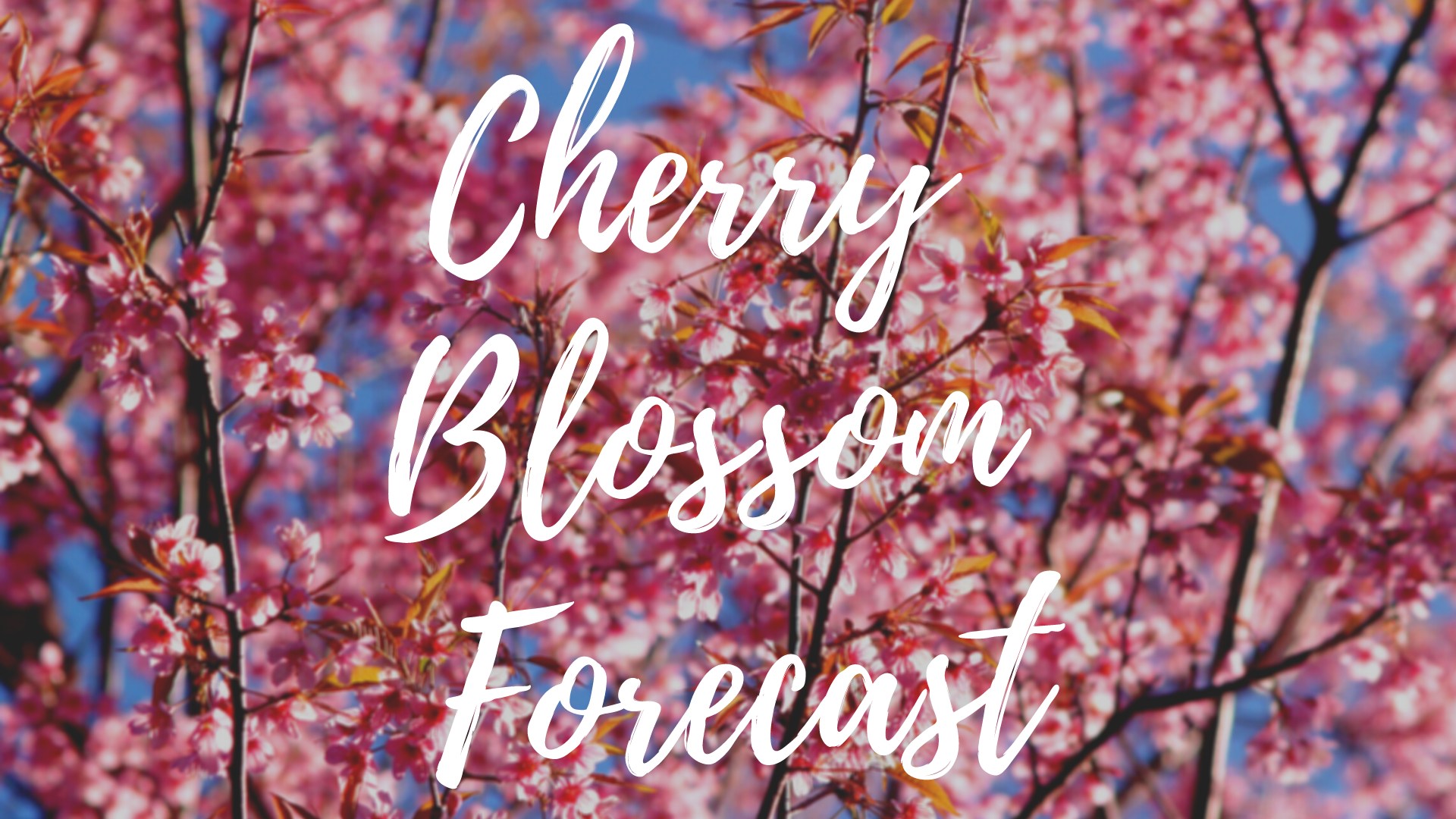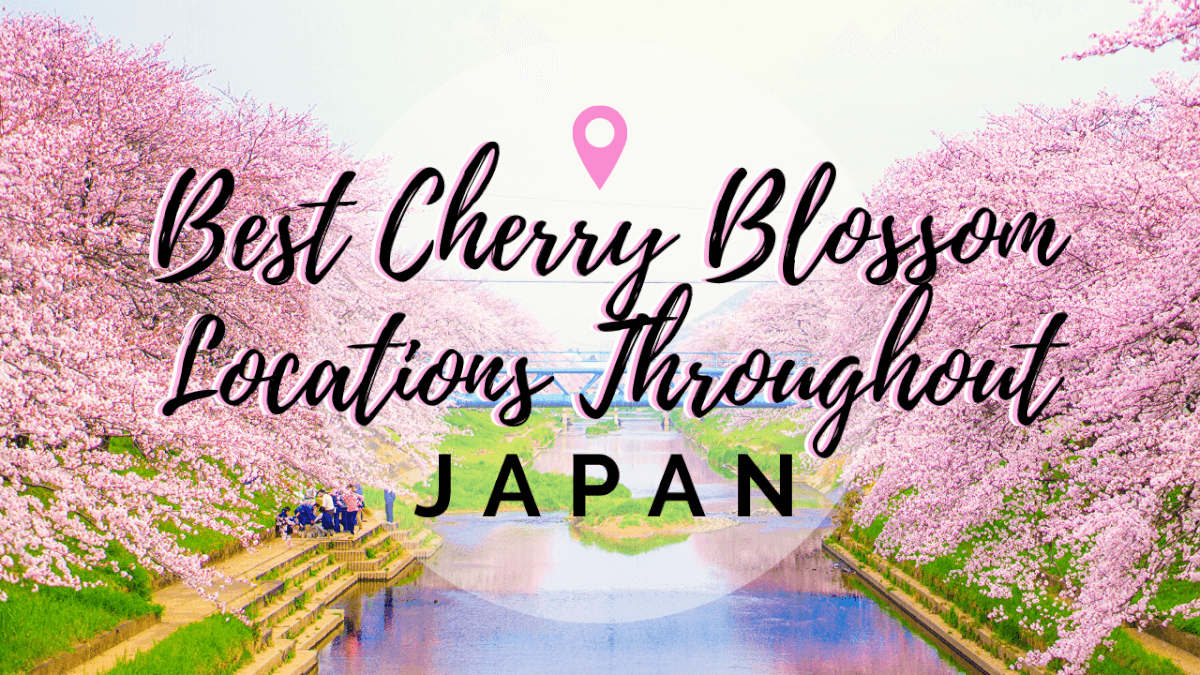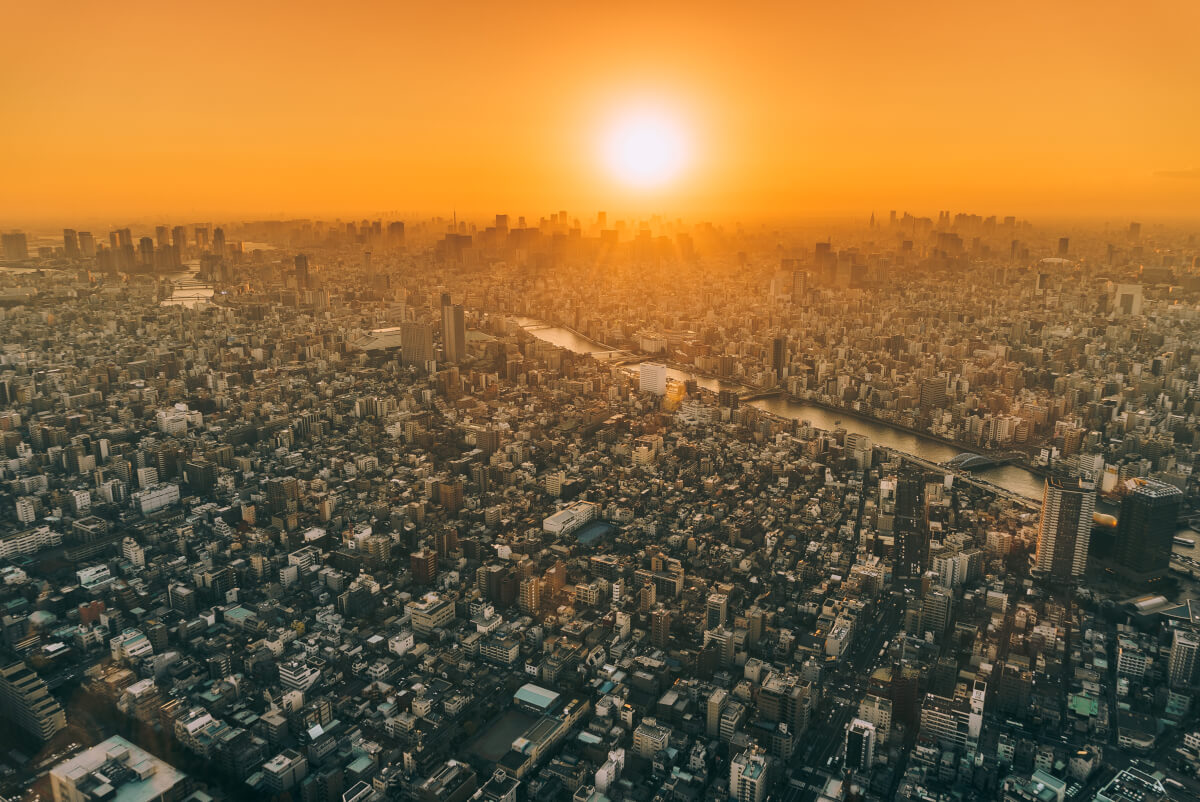‘Hanami season’ in Japan is when everyone gets the urge to spread a picnic blanket under the blooming trees to enjoy food and drinks with family, friends, and co-workers. Sakura, or cherry blossoms, are the most known and popular flower in Japan and every spring Japan attracts many tourists from all over the world for their beautiful pink and white flowers. But every pink blooming flower in the springtime must be sakura right? Well surprisngly that’s actually not the case! Most people don’t realize that there are a variety of different flower blossoms that look quite similar to cherry blossoms but bloom at a slightly different time during spring. Let us introduce you to the three iconic flowers in spring: plum, cherry, and peach blossoms and how to tell their differences, as well as the best spots to see them all!
Plum Blossom vs Cherry Blossom vs Peach Blossoms
Between early February and late April, Japan is a feast for the eyes with light to dark pink blossoms covering city streets, parks, riverbanks, and open orchards. Many people think they are all cherry blossoms, but did you know that they are actually one of 3 different fruit-bearing trees? Throughout spring in Japan, you can see plum blossoms, cherry blossoms, and peach blossoms, which all look quite similar. With all these different blossoms, how can you know which ones you are seeing when you are out and about in Japan? Let’s take a closer look at each flower’s features and the meaning behind these beautiful blossoms.
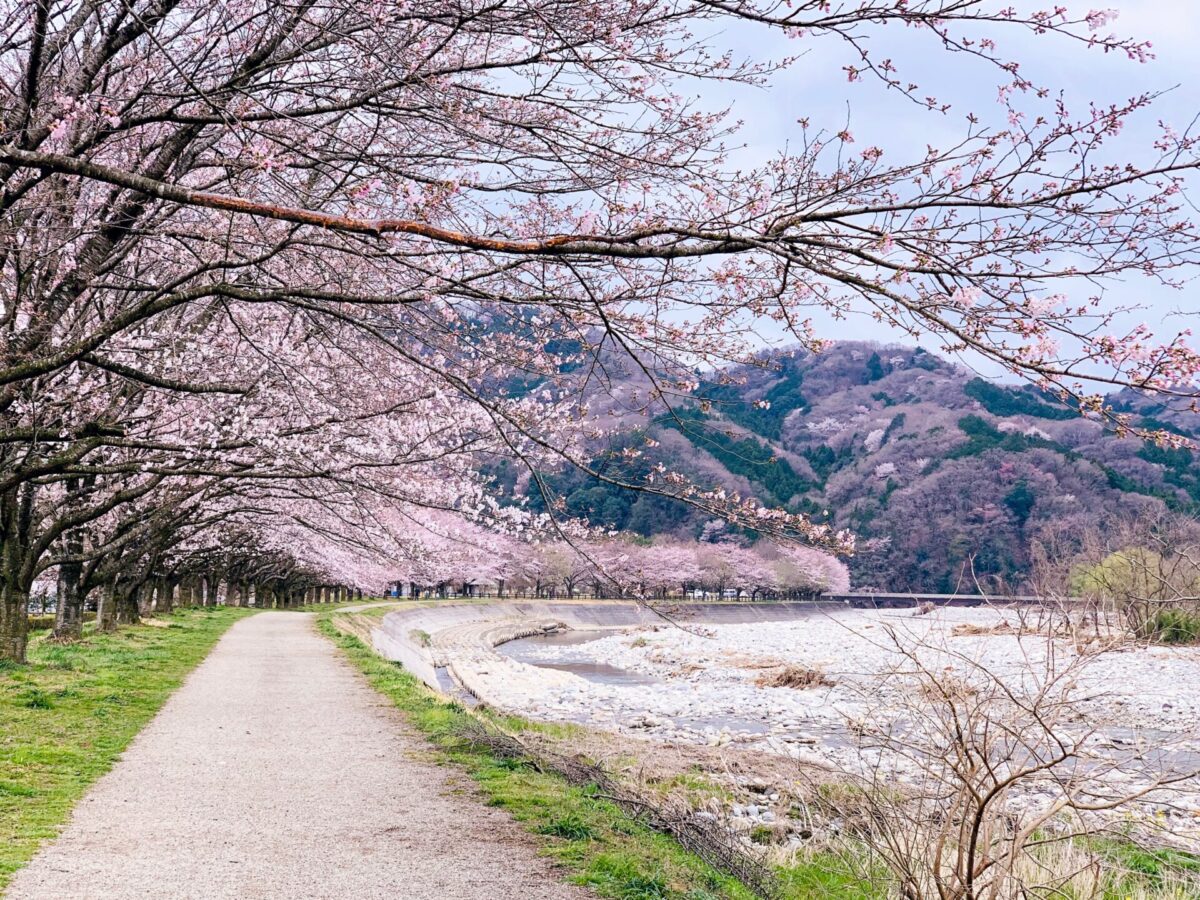
Plum (梅, Ume) blossom
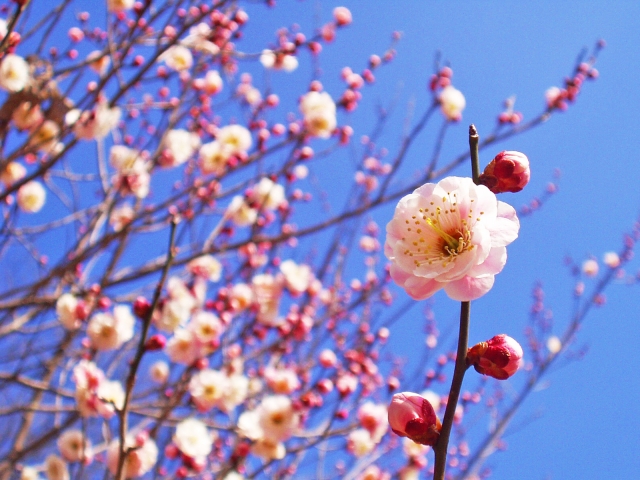
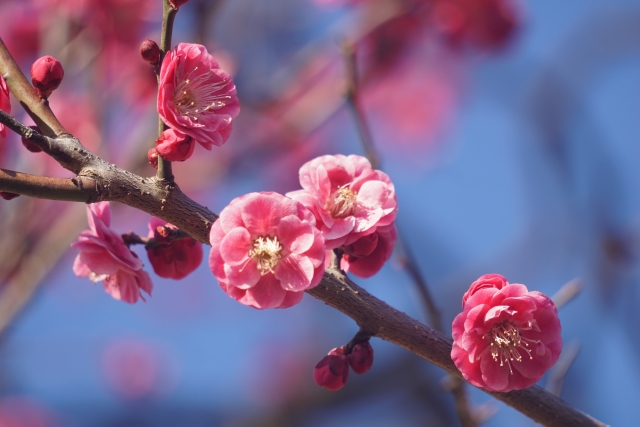
Color
The earliest bloomers are the plum blossoms. Plum blossoms are the only ones that can turn into a very dark pink that almost looks red. They can, however, also be pinkish white like cherry blossoms.
Shape
The flower petals of the plum tree are usually evenly rounded. But as they are a product of nature, some plum blossoms don’t have a very neatly rounded shape, and blossoms of other trees can mimic those of the plum blossoms.
Attachment to the tree
The next thing you should look at is the way the flowers are joined to the tree branch. Plum blossoms grow individually as opposed to in a pair or a bunch. They grow straight from the tree branch without any stalk.
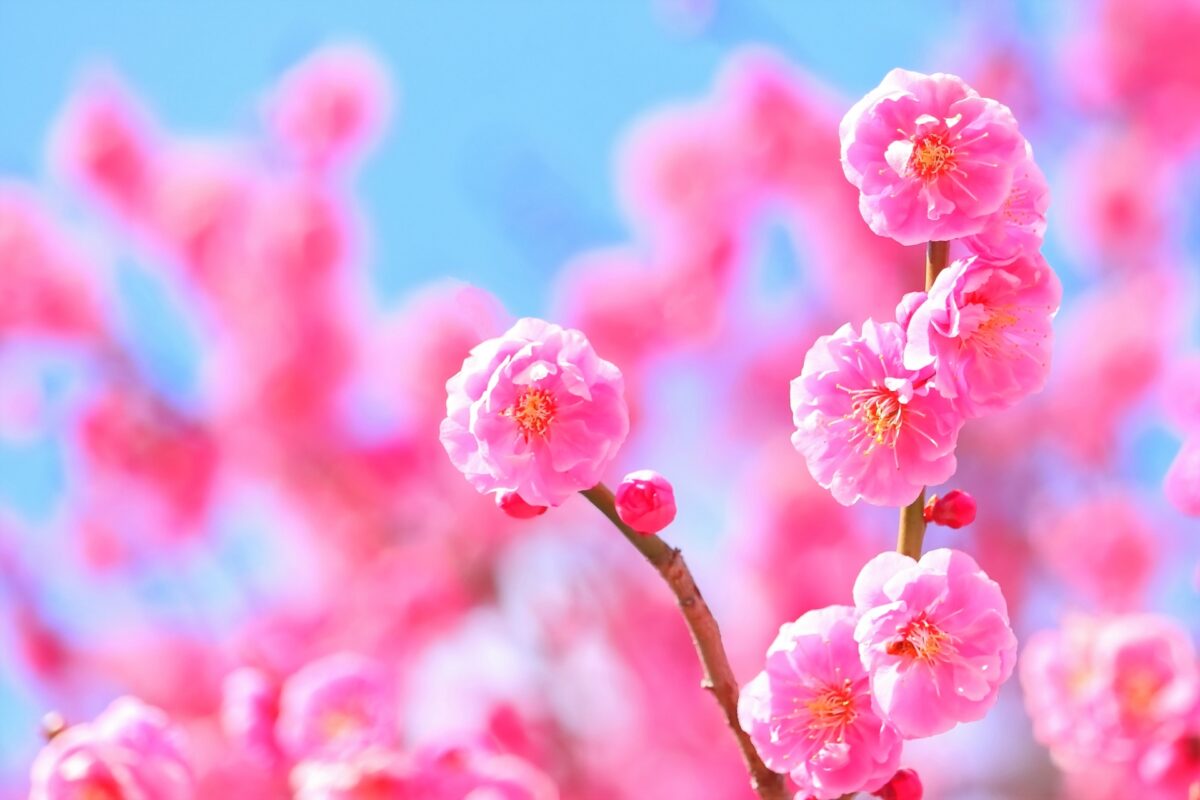
Meaning and blooming period
Plum blossoms bloom early with the first blossoms opening up in February. When you see plum blossoms, it means that spring has arrived in Japan! They bloom until March, which is when the other blossoms start taking over. For this reason, ume blossoms are often mentioned in Japanese poetry as a symbol of spring. The flowers of the plum tree are also associated with the Japanese bush warbler(a bird) that appears on one of the cards of a traditional Japanese card game called Hanafuda. Plum blossoms are believed to ward off evil, so plum trees are often planted in the northeast direction of a garden which is the direction from which evil spirits are said to enter.

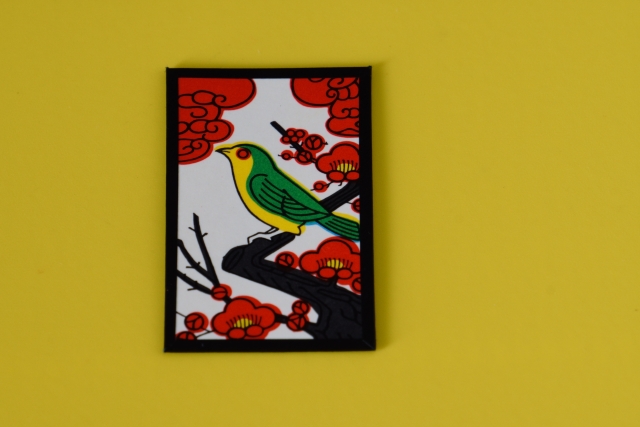
Peach (桃, Momo) blossom
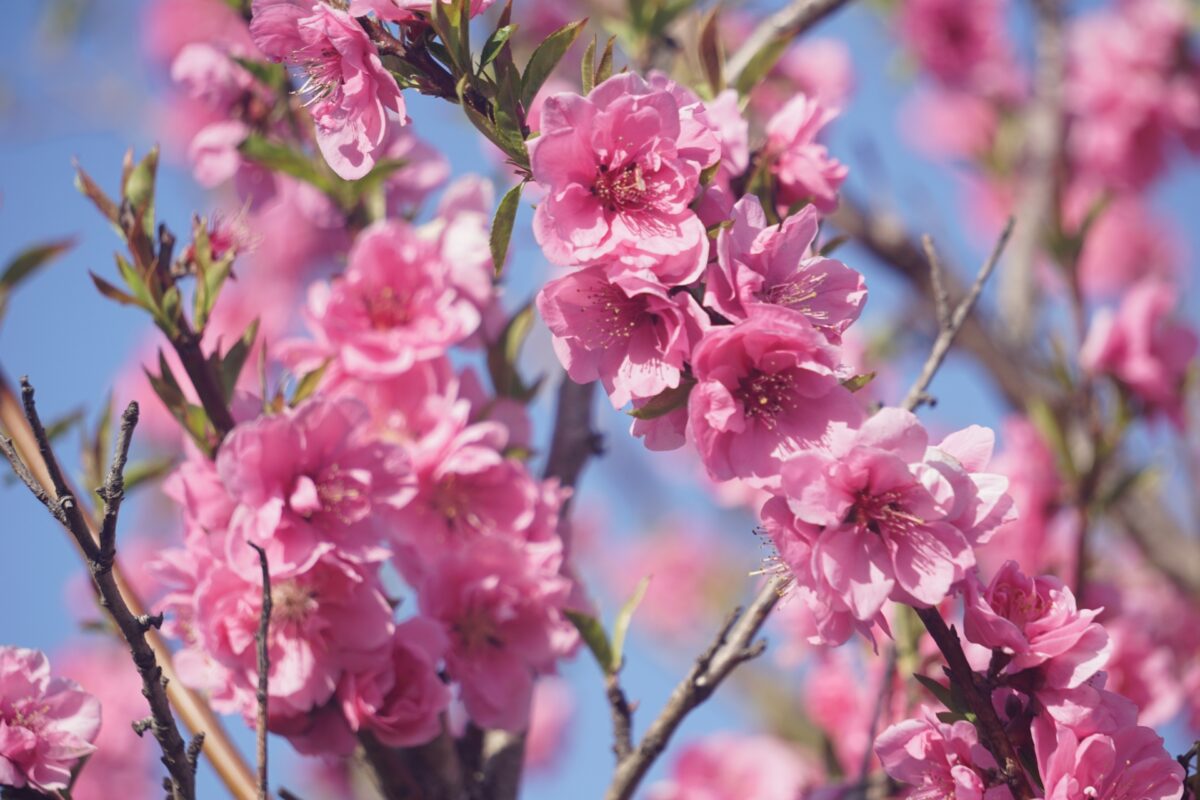
Color
The trees that bloom second out of these three are the peach blossoms. Unlike cherry blossoms or plum blossoms, peach blossoms are always pink.
Shape
The petals of the peach flowers are shaped like teardrops. The easiest way to identify the peach flowers blossom is from it’s oval shaped leaves growing together.
Attachment to the tree
The peach blossom vs cherry blossom and plum blossom are unique in the way that they grow in pairs from short stalks that sprout from the same branch.
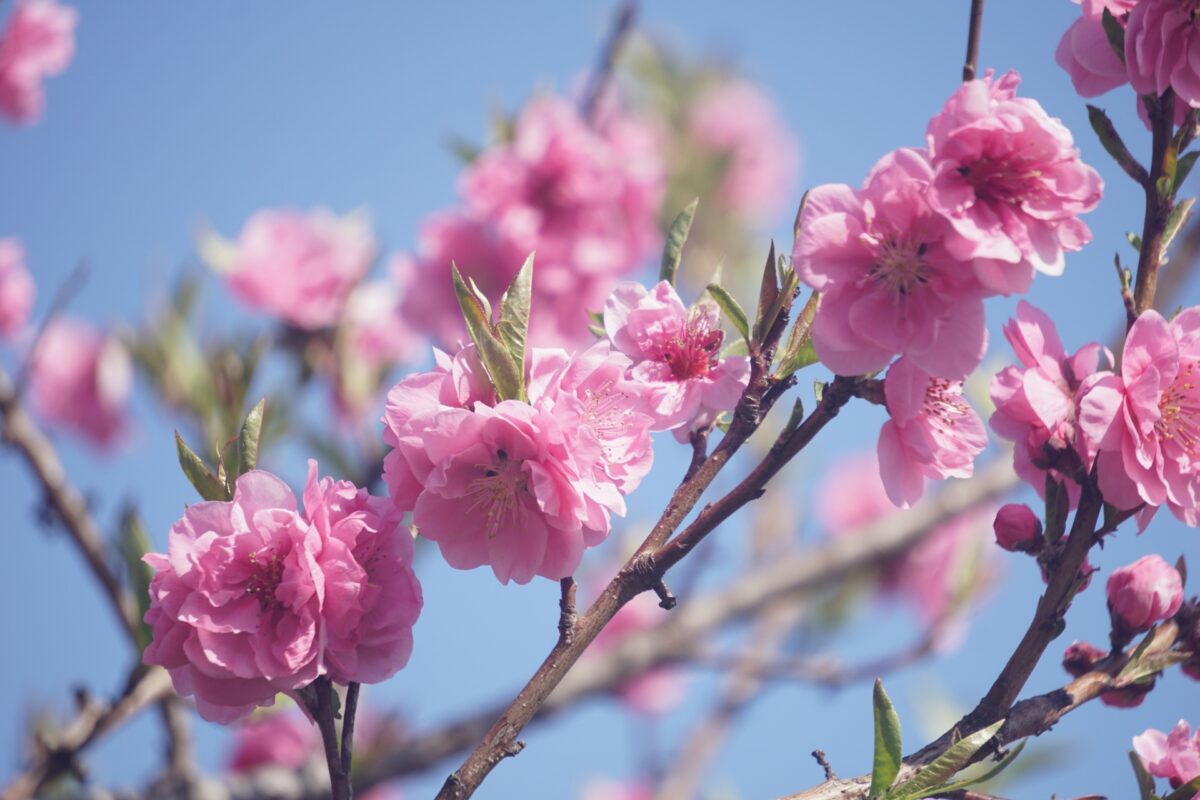
Meaning and blooming period
Peach blossoms start to bloom in March. This blooming period coincides with Hina Matsuri (Girl’s Day) on March 3rd. This day is also called Momo no Sekku, which means the day of peaches. It’s the day to pray for all girls’ healthy growth and fortune. Peaches are believed to ward off the evil spirits and provide the power of immortality and longevity for people who consumed it. There is also a very famous Japanese folk story about a boy named Momotaro, which means ‘peach boy’. In this story, the hero fights off all kinds of bad guys pointing at the special-fighting powers of peaches.
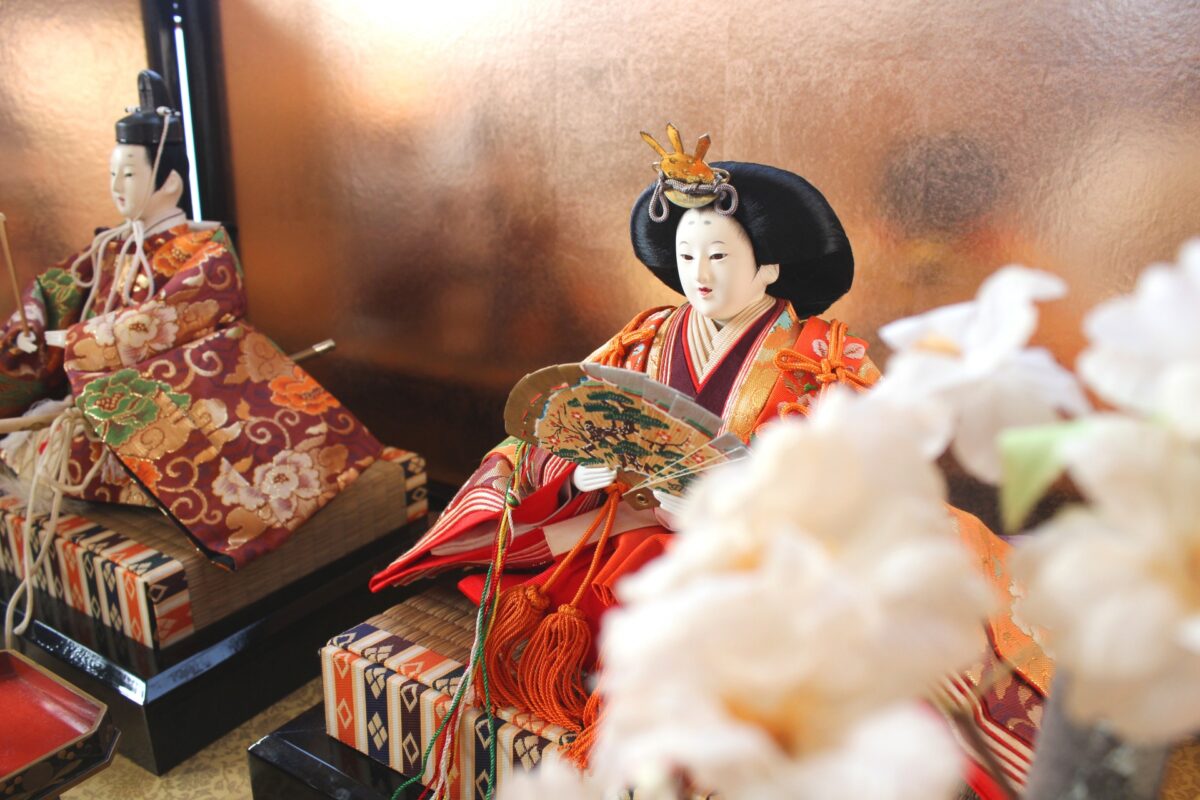
Cherry (桜, Sakura) blossom

Color
As for color, cherry blossoms are often pink but can also be more of a white color. All three flowerss can be pink, though, so you can’t always define them strictly by color alone if you want to identify the flowers correctly.
Shape
Unlike the other two flower petals, the cherry blossoms have a little indent or split at the end of their petals. This is one of the big differences and identifying factors between cherry blossoms and the other two.
Attachment to the tree
Unlike plum blossoms, cherry blossoms grow from stalks and are known for blooming in clusters or bunches instead of just individual flowers from the branch. They also tend to have a longer stalk that attaches them to the branch.

Meaning and blooming period
Cherry blossoms bloom between late March and April, although the exact blooming periods vary every year. Sakura are the most famous type of flowers in Japan, and Japanese people’s love for sakura goes way back and is steeped in symbolism. Cherry blossoms are a symbol of spring and renewal, and because of their short but beautiful blooming period they symbolize the fleeting beauty of life. People go out to enjoy their beauty and soak it all up while they can, which is why Japanese people are so enthusiastic about hanami picnics. It is a long-standing tradition that goes all the way back to the Heian period. Furthermore, April, when the flowers bloom, is also a period in which many people start a new life in a new job or school. This only adds to the already strong sentiments of the passage of time and the period of refreshment and renewal.
The best places to enjoy plum, peach and cherry blossoms
Plum blossom viewing spots
During the blooming season, several places host plum blossom festivals throughout Japan. At these festivals you can enjoy beautiful scenery full of white and pink flowers.
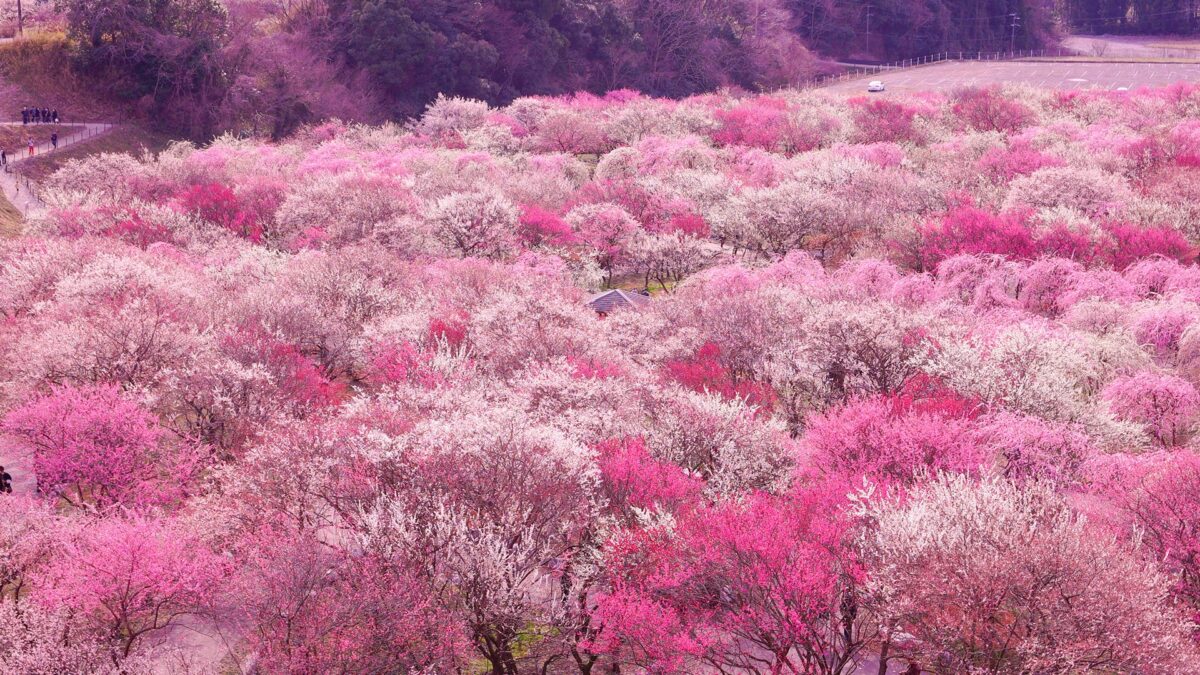
- Kairakuen (Ibaraki)
- Yushima Tenmangu (Tokyo)
- Atami Plum Garden (Shizuoka)
- Kitano Tenmangu Shrine (Kyoto)
- Tsukigase Plum Valley (Nara)
- Korakuen (Okayama)
Cherry blossom viewing spots
Popular cherry blossom viewing spots are also popular hanami picnic spots. During the peak season, many people flock to the park, which causes some people to wait to reserve the best spot on the night before the hanami party. Some famous spots can be very crowded, if you prefer quiet places, check out our hidden (but beautiful) viewing spots you can find in Tokyo.
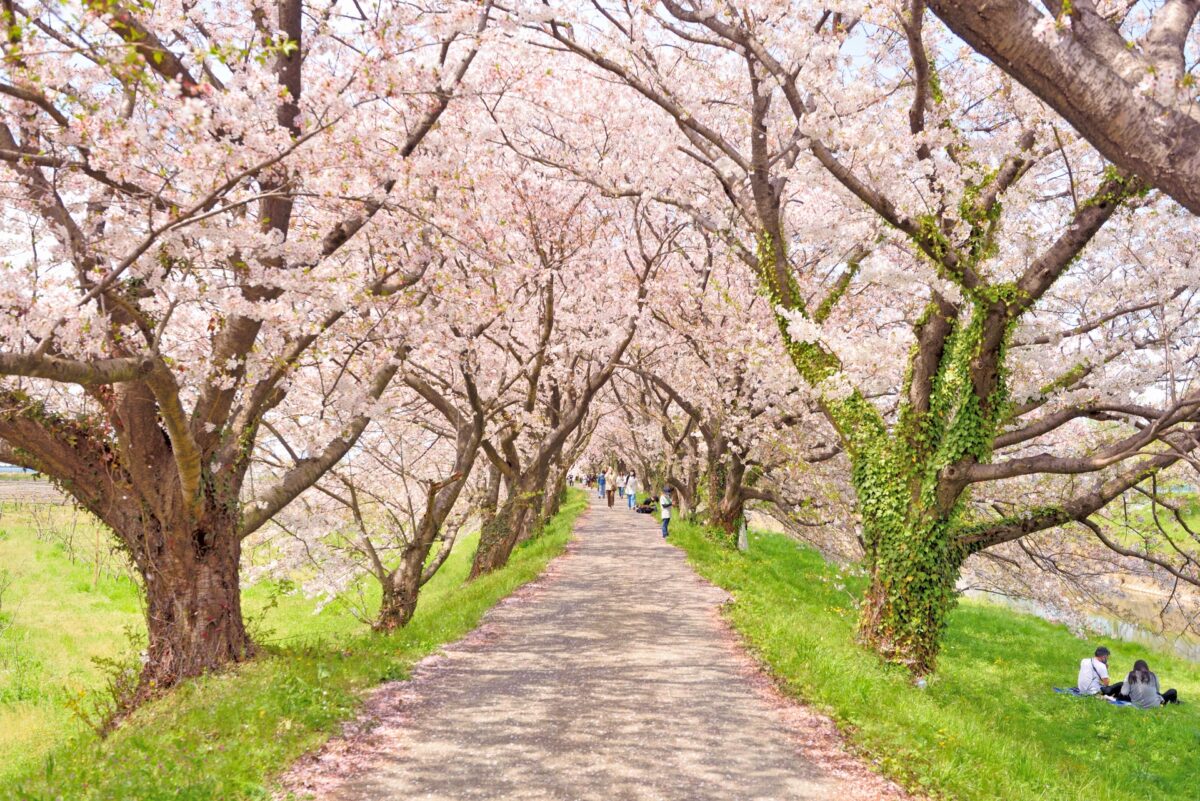
- Nakameguro (Tokyo)
- Ueno Park (Tokyo)
- Hanamiyama Park (Fukushima)
- Kawaguchiko (Mt. Fuji)
- Mt. Yoshino (Nara)
Peach blossom viewing spots
Togenkyo is a term meaning an utopia which comes from a Chinese fable The Peach Blossom Spring. And beautiful parks featuring peach blossoms are sometimes described as Togenkyo.

- Koga Park (Ibaraki)
- Fuefuki City (Yamanashi)
- Kaminaka, weeping peach blossoms (Aichi)
Travel to Japan in Spring
One of the most popular seasons to travel to Japan is during the spring, with the season’s largest draw being the various blossoms including the most famous sakura cherry blossoms. The spring’s mild temperatures are another reason to travel in spring; as the season progresses, temperatures become increasingly more comfortable. And if you are looking to experience winter sports like skiing in Japan, early to mid-spring is still in season for Hokkaido’s slopes. If you want to find the best spots to enjoy seasonal blossoms or other flowers, hiring a private guide is a great idea. They can take you to not only the most famous places to enjoy the flowers, but you can also request the more hidden gems in the city they know like the back of their hand. We offer private tours with experienced, fun guides in cities like Tokyo, Kyoto, Osaka, and Hiroshima. We hope you learned a thing or two about how to tell the difference between plum, cherry, and peach blossoms in Japan and that next time you can differentiate each flower yourself!
Follow us on Instagram, Facebook and Twitter for more travel inspiration. Or tag us to get featured!
Happy traveling!
Other articles you might enjoy

Stefanie Akkerman moved from the Netherlands to Japan in 2013 with her Japanese husband and son. She jumped into the niche of Dutch tour guiding in Tokyo and Kamakura in 2015 and occasionally writes articles about all the great sights and activities Japan has to offer. She loves (Japanese) food, and to work that all off she goes diving, snorkeling, cycling, or hiking.
This post may contain some affiliate links. When you click through and make a purchase we may receive some commission, at no extra costs to you.
